Looking for the best topcoats to protect painted furniture? Get fast answers to the best products and techniques that will keep your projects beautiful, durable, and lasting for years.
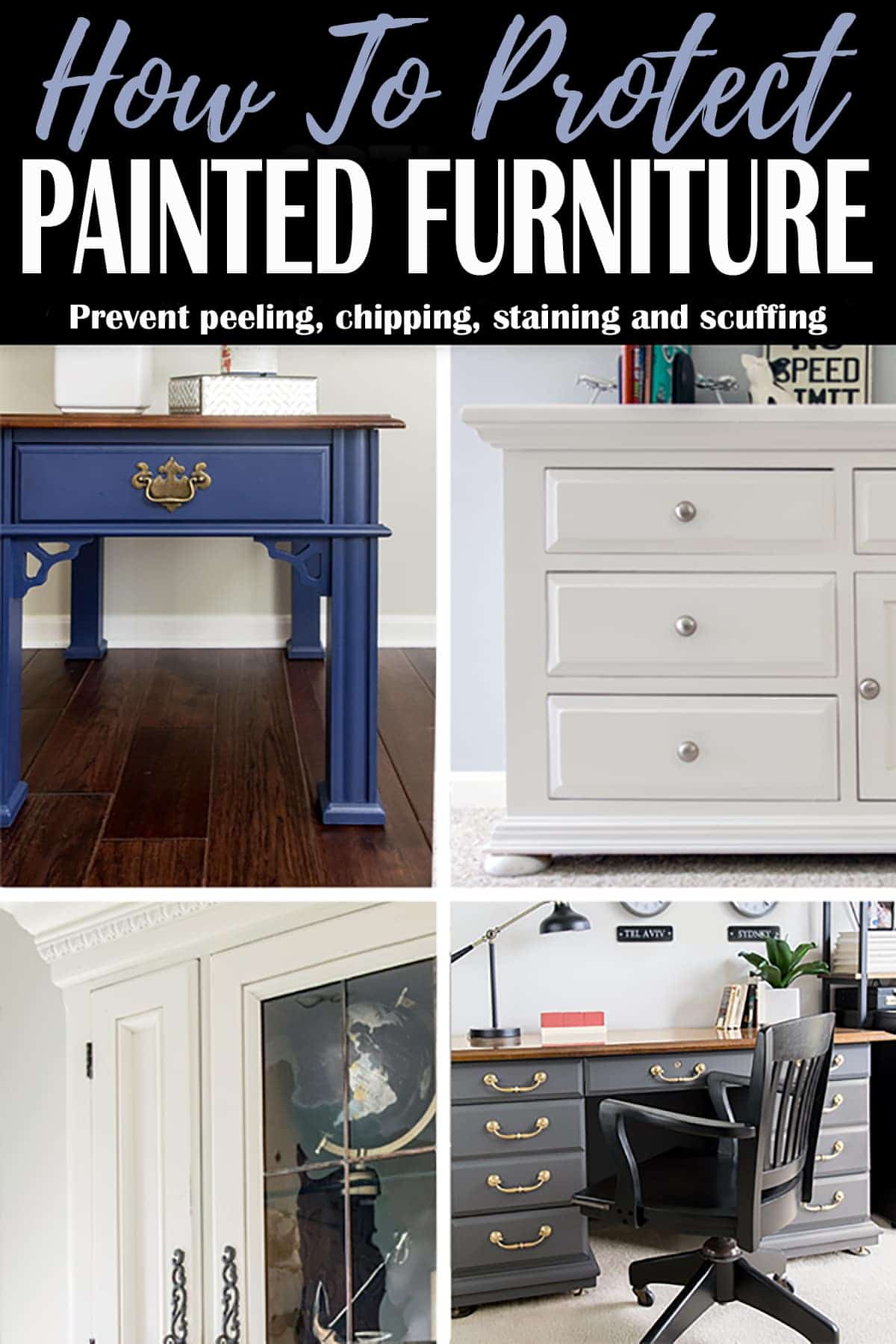
Breathing new life into a piece of furniture is one of the best ways to decorate your home and make it more functional. It’s a really fun and a slightly addicting hobby, to be sure! But now that you have that piece that shows your unique style, what is the best way to protect it?
One of the most common worries that I see from clients, friends, and readers is about the durability of any painted project. How do I protect my painted furniture? Can I scrub it? Will it show fingerprints or smudges? These are all very valid questions that we will be giving you the shortcut answer to!
Note: New products have come on the market in recent years and I have updated my recommendations for 2021 after experience with dozens of painted projects for clients and myself.
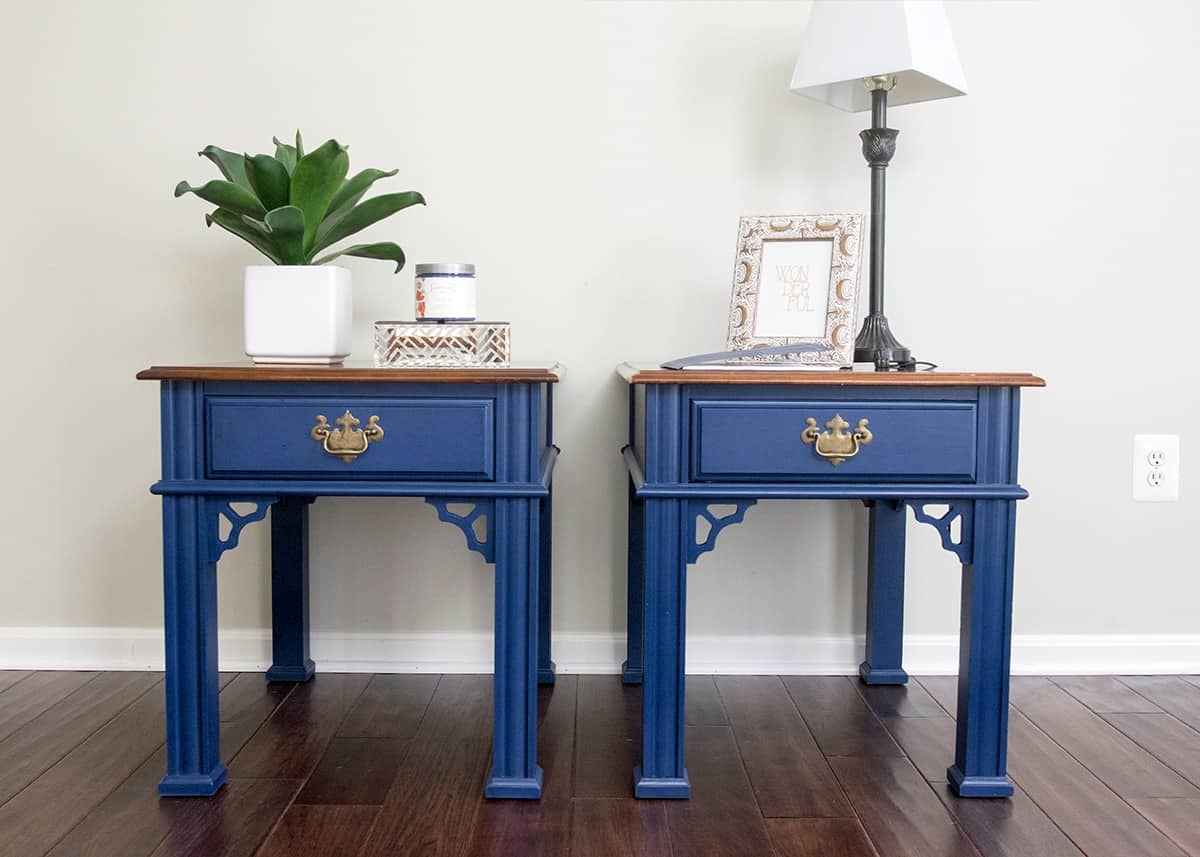
Does Painted Furniture need a Top coat?
My house is rowdy with boys, large dogs, and general mayhem around the clock. Feet on furniture and loud bangs are a pretty normal occurrence. Although no finish is going to be bullet proof, a durable top coat is going to make it last for years.
I do not always use a topcoat as some paints are very durable on their own. For example, my Fusion Mineral Painted Entertainment Center does not have a topcoat. There are a few instances, however, that I highly recommend a topcoat:
- High traffic pieces. Particularly dining tables, coffee tables, desks, end tables, and cabinets as these are all used often and subject to wear and tear.
- Dark or Black Paint colors. Dark colors tend to show smudges, fingerprints, and dust more easily. I want to be able to wipe those surfaces, so I love that poly provides that extra protection that makes surfaces scrubbable.
- Chalk Paint. Chalk paint is blessed with a velvety feel that many love. However, chalk paint is more prone to stains and marks since it has the least smooth sheen.
- Kitchens and Bathrooms. Generally, I highly recommend topcoats for pieces specifically in kitchens and bathrooms because of the potential for water exposure and high humidity.
Types of Top Coats
There are essentially two kinds of protecting top coats for furniture projects: wax and water-based polyurethane. Epoxy or resin is sometimes used but that’s a whole different subject. With water-based polyurethane, you may see companies describe them as water-borne, polycrylic, polyacrylic, or acrylic resin. Without giving a chemistry lesson, we are grouping them all under water-based.
I could write whole articles dedicated to the differences between wax and water based polyurethane, but for the purposes of this article, water-based polyurethane provides much more durability and protection over time than wax does.
That isn’t to say that you should always use a polyurethane however. Wax provides an aesthetic that Poly cannot match. You can see our Raw Finish Table makeover to best explain. Also, wax can be used over water-based poly! I would highly recommend a flat or low sheen water-based polyurethane, and the wax must be the last coat.
A Word About Sheen Changes
In the below picture, I painted two side tables for a friend using Country Chic Chalk Paint in Midnight Blue. I did warn her of one thing…a topcoat will change the sheen.
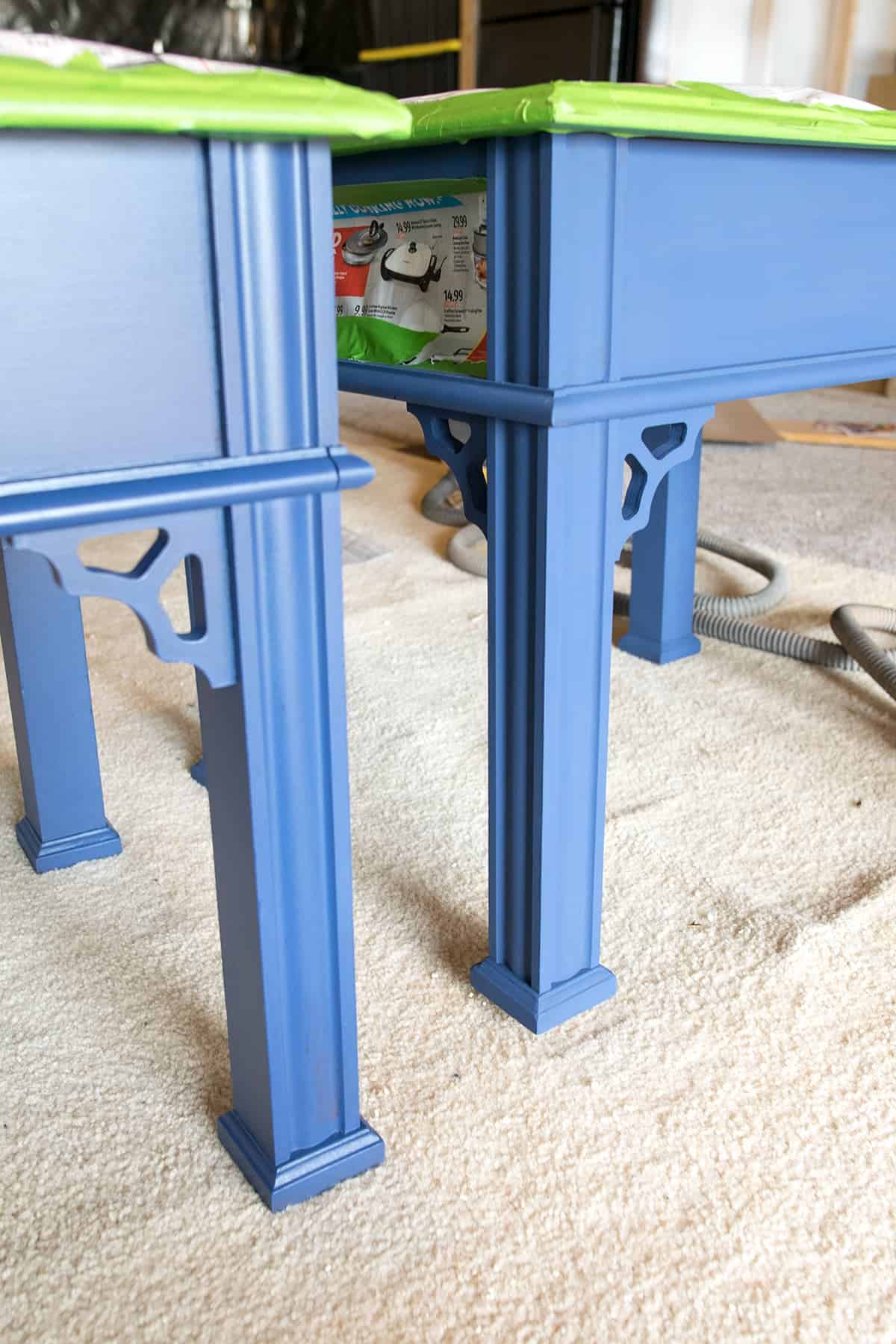
In the photo above, the right-side table has no topcoat on it, while the left side is sprayed in two coats of Benjamin Moore Polyacrylic in Satin.
How much of a change depends on which brand you use and sheen. However, even a flat topcoat on top of a flat paint will slightly deepen the color.
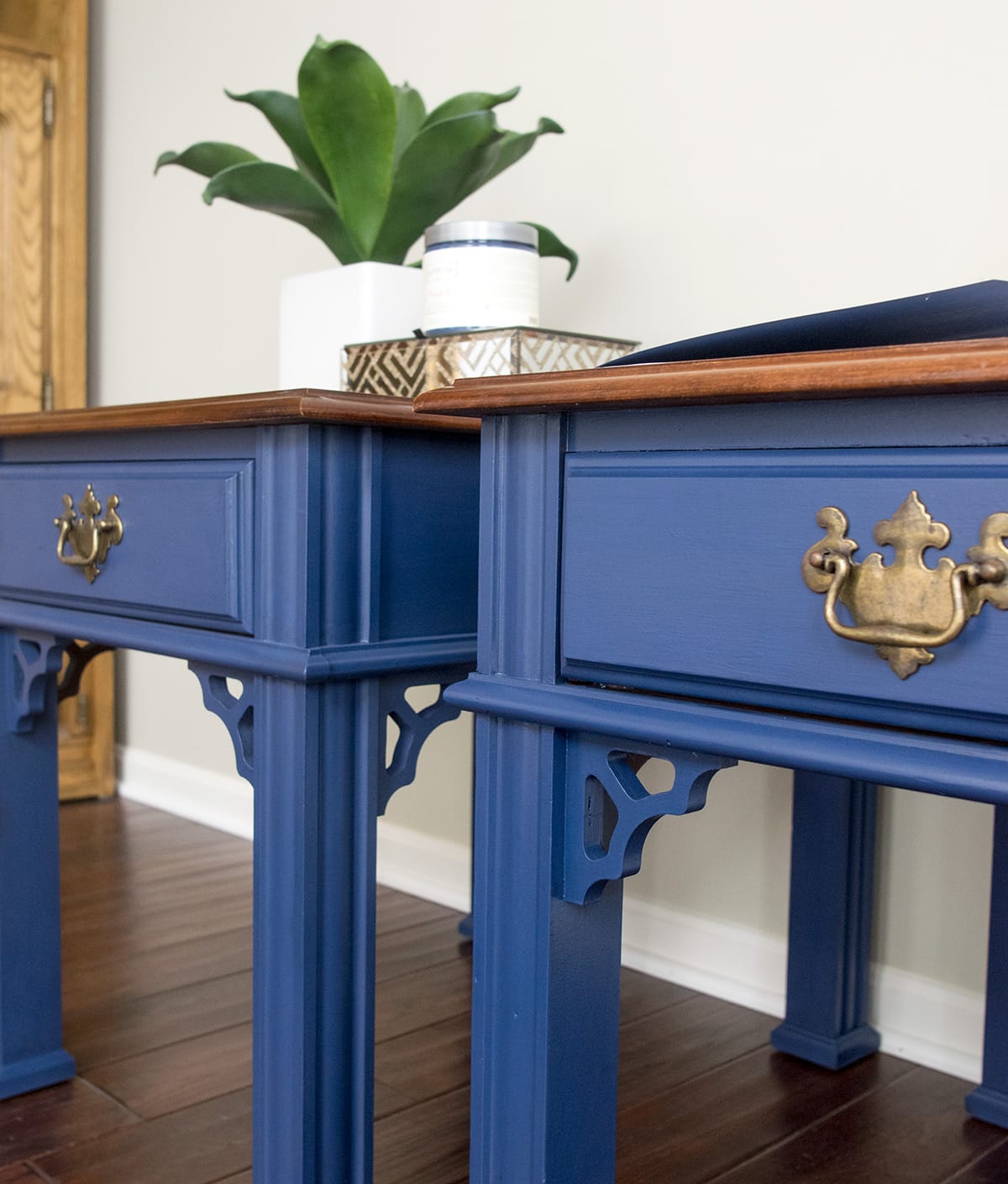
Best Water-Based Polyurethanes for Furniture
You will definitely want to read the pros and cons of each because different projects require different topcoats, but below is a overview to understand my recommendations.
- Best Overall (Sprayer): Benjamin Moore Advance Stays Clear
- Smoothest Brush Finish: Varathane Waterbased Polyurethane
- Best Budget: Minwax Polyacrylic Spray
- Chalk Paint Best Matte Finish: General Finishes Flat Out Flat
I have used many other types of clear coats and I would like to list why they aren’t included in my recommendations. I get a lot of questions about these and this is my personal experience so other’s may disagree.
- Fusion Mineral Tough Coat: I hate having to wait 30 minutes to mix and I have had some problems with streaking.
- Crystalac Water Based Polyurethane: One of my dark pieces developed water rings, and it not my favorite sheen.
- Anything Oil Based: DO NOT USE! These tend to create a yellow haze.
- Bona Waterborne Traffic HD: This is technically a floor polyurethane and probably the best on the market for that. I looooved it for a floor and staircase I stained. However, I have not tested it long enough over painted surfaces to see if it ambers over time. Same with Bona Mega One Crystal Clear.
Choose the Right Polyurethane
Varathane Water-Based Polyurethane
A beautiful, rock hard finish that lasts. The best brush finish of all that I have tested, it lays smooth without brush strokes and is low VOC for indoor use.
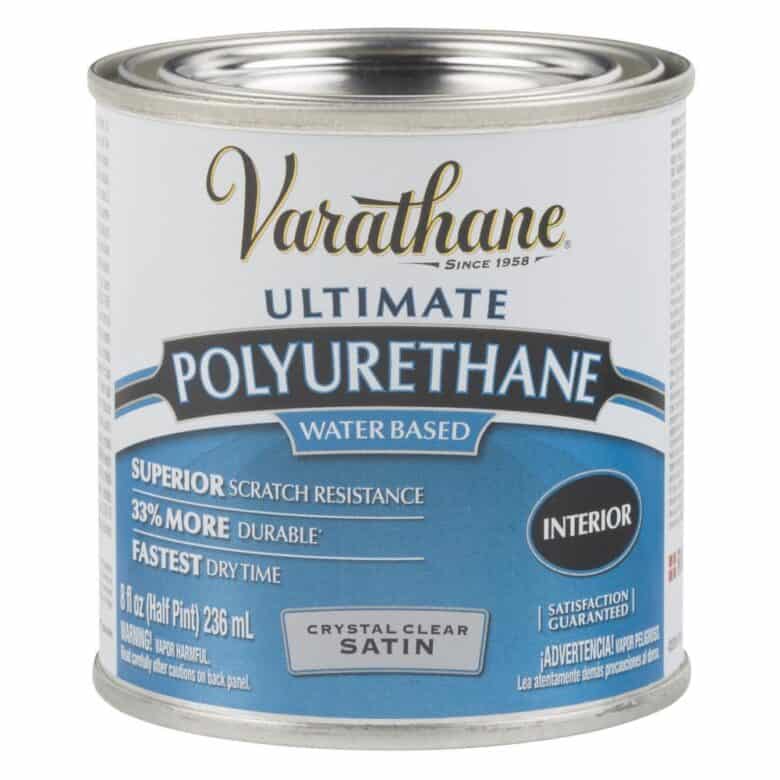
Pros:
- As good a durability as Stays Clear.
- One of the easier ones to find at your local Home Depot.
- Several Sheens including Matte, Satin, Semi-gloss, and Gloss
- Easiest to brush without leaving brush marks.
- The Best Brush finish polyurethane I have tried.
- It also can be sprayed. I have used it a few times but one of the times that I sprayed the satin with a HVLP sprayer (air powered) and it turned into a powdery, almost cloudy finish.
Cons:
- Bubbles can be an issue (sometimes). If you are careful and do this immediately, you can touch the bubbles with a tooth pick or something sharp to pop them. You should use a quality brush and don’t rake off the excess from your brush back into the can. It helps to use a different can and pour that can back in when finished.
- Dries very fast which can make brush strokes an issue because it sets so fast.
- Stays Clear still wins for me with a paint sprayer.
Example:
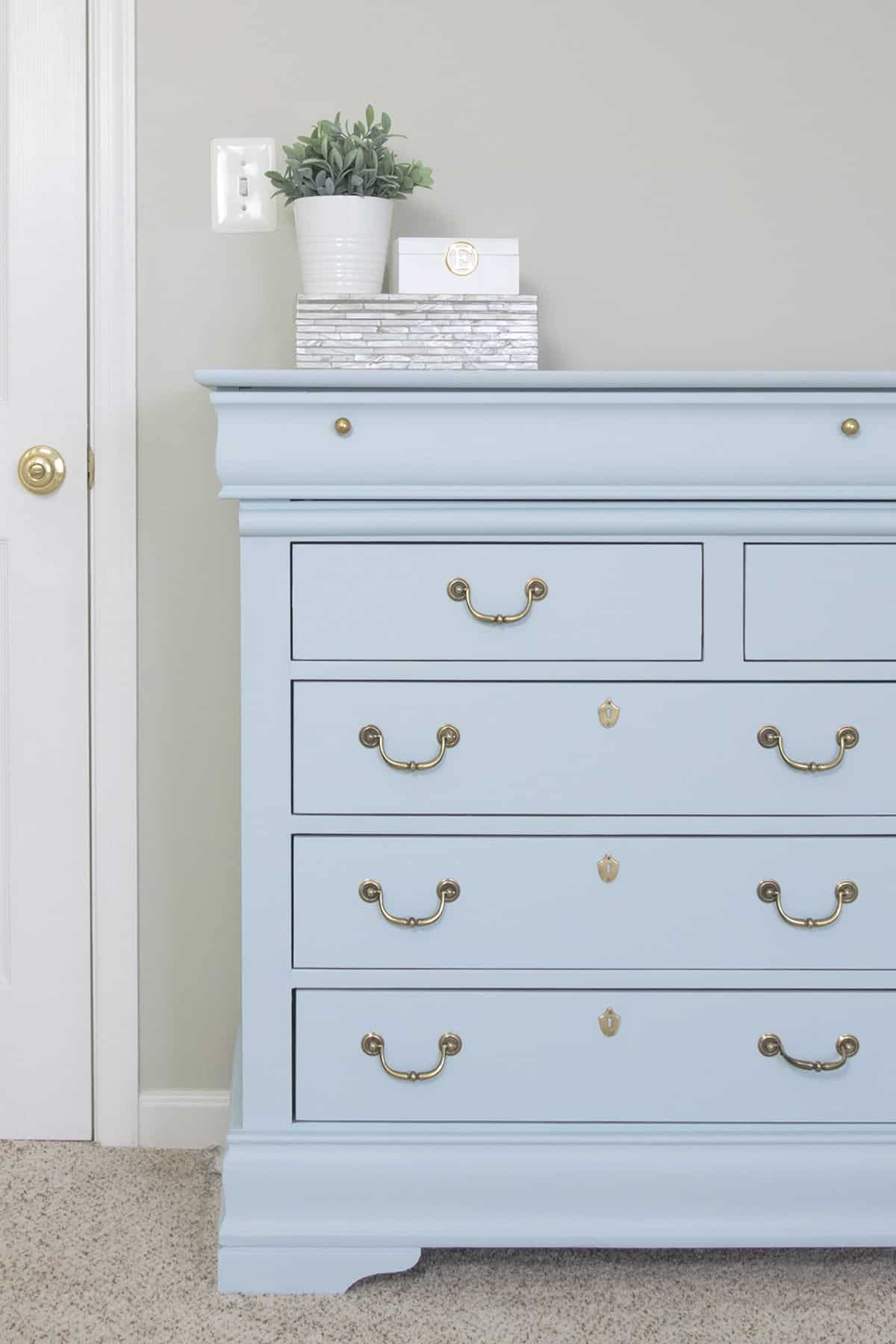
You can see more details about this post about How To Paint a Dresser. The dresser is painted in Fusion Mineral Little Whale with Varathane Polyurethane in Flat.
Benjamin Moore Stays Clear
My personal favorite for a satin/eggshell sheen (called low lustre). It’s actually made for painted floors, so it’s durability is top-tier! The main problem is that I find it can only be sprayed (but that spray is unmatched in finish).
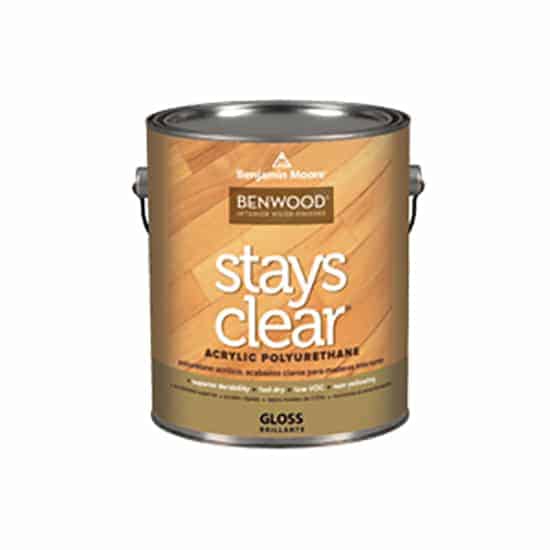
Pros:
- Best durability I have every seen.
- I have used this on several projects with many different paints (including latex because…long story) and it has NEVER yellowed.
- Several sheens including flat, low lustre, and high gloss. I have not tried the flat but I want to.
Cons:
- It can be brushed, but it is much better thinned by 10% and used with a paint sprayer.
- Generally, has a very long cure time.
- Slightly harder to find (my Benjamin Moore Store only carries gallon size) and is expensive.
- Can only be purchased at a Benjamin Moore Store.
Example:
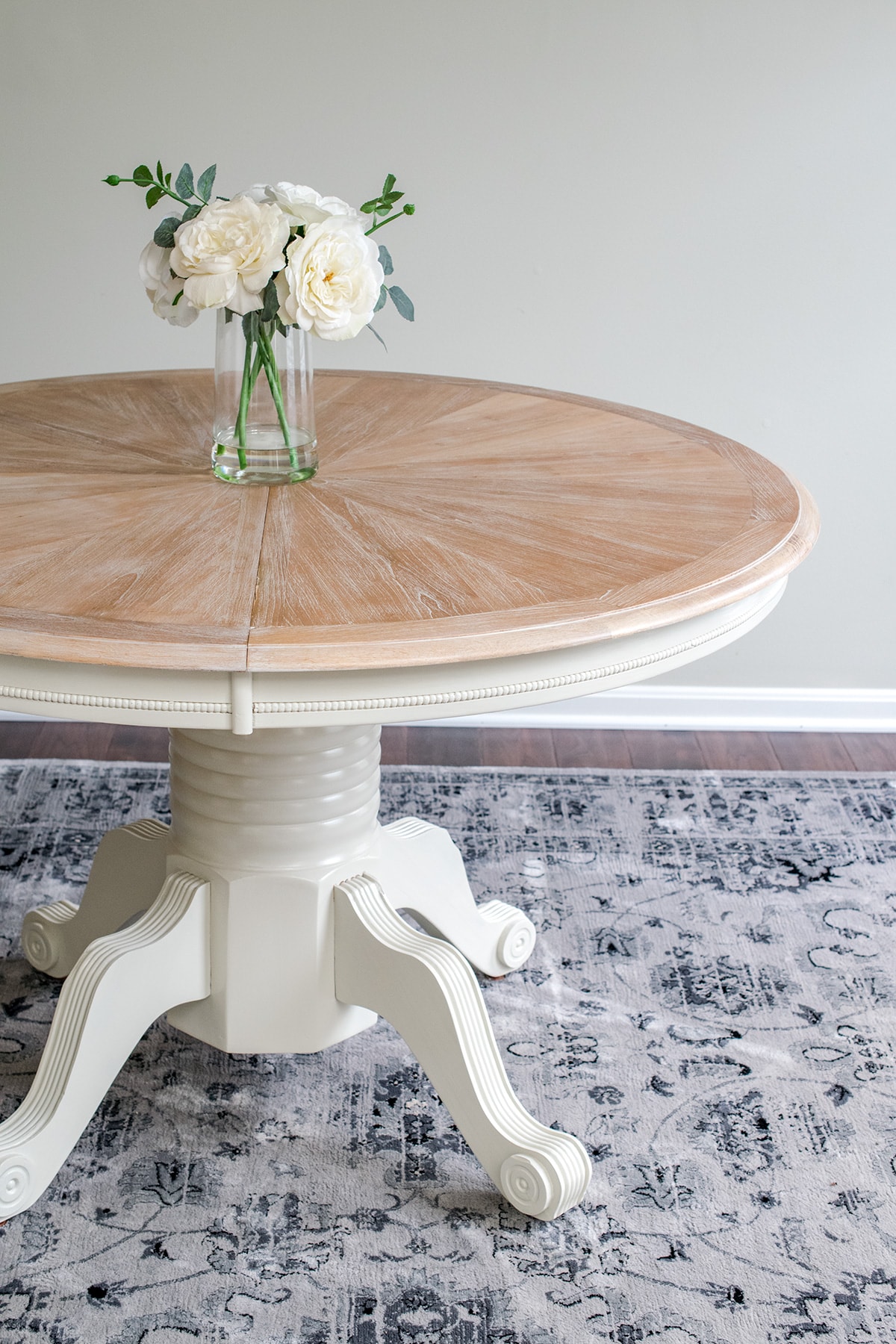
This cerused table was top coated with Benjamin Moore Stays Clear. I put several coats on this since it is a dining room table, but you can see the sheen on the base. Heavier or more coats will have a longer cure time. For example, with cabinets I know they are cured when I can shut the door for 24 hours without sticking.
General Finishes Flat Out Flat
I do like this one, especially with a paint sprayer. For my projects, it is the best and most flat sheen option that I have used. It isn’t quite as durable as the High Performance Polyurethane (which does have a flat option) or the ultra-durable Enduro Clear Poly.
Pros:
- Beautiful product that can be brushed or sprayed.
- The sheen tends to be more matte than other polys that I have tried.
- They also have a High-Performance Polyurethane that is very good quality with even more durability.
Cons:
- Most Expensive Brand.
- I don’t find myself reaching as much for this with clients because many of them prefer an eggshell sheen rather than a true flat.
Example:
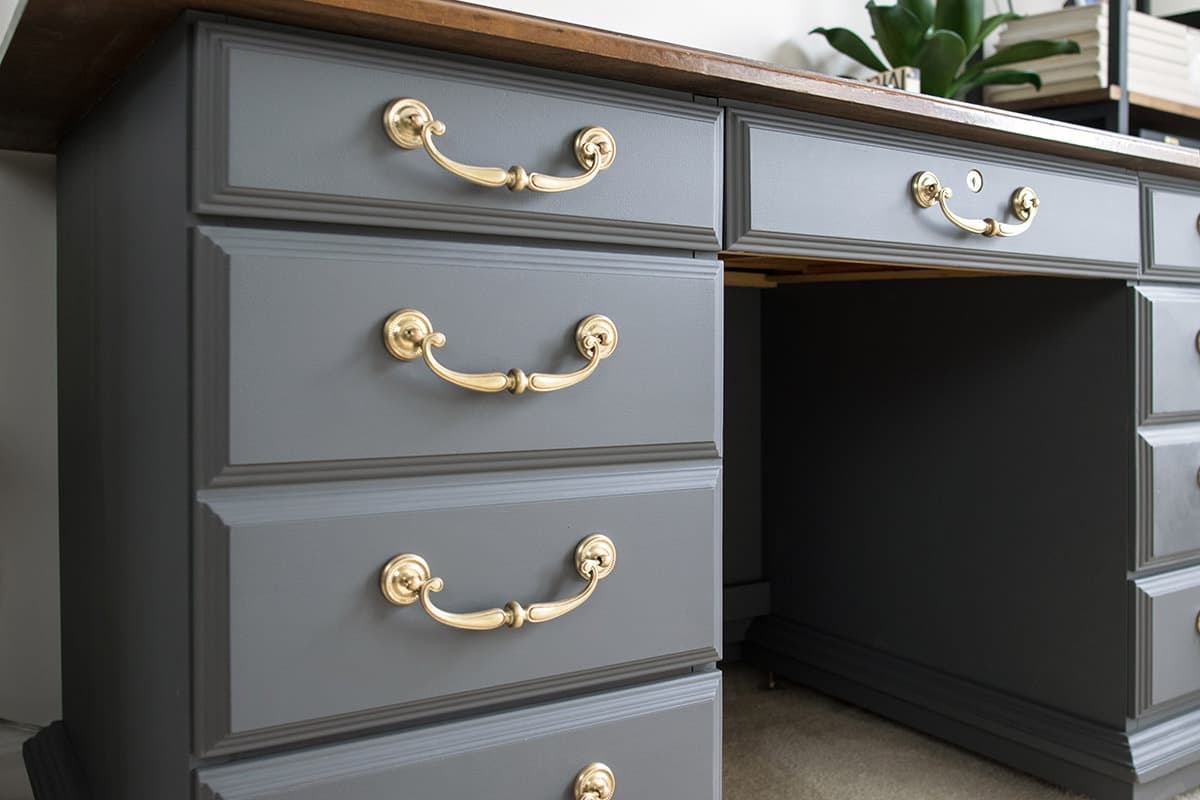
This chalk painted desk was sprayed General Finishes High Performance Flat as a topcoat.
Minwax Water Based Polycrylic
The best budget option for painting your piece. And here it is: Minwax Polycrylic. It comes in both a spray can and a paint can, which can be easily brushed or sprayed.
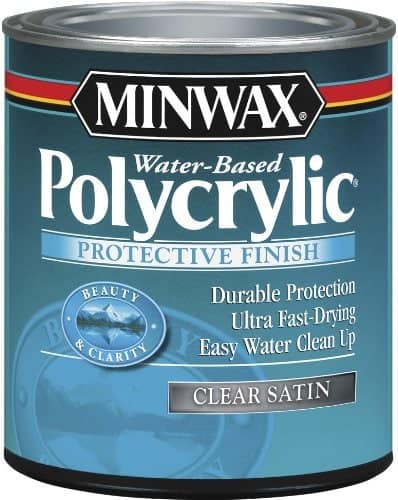
However, I will give a caution to you. Especially with white or pale colors, I have read about and personally seen this product turn yellow, usually with cheaper brands of paint. By far, most users of this product have not seen a problem, so I would do a test on a scrap piece of wood and let it sit for a few days before finishing your piece.
Pros:
- Comes in satin, semi-gloss, and flat.
- Most inexpensive option.
- Easy to find in stores.
Cons:
- I have personally seen this product turn yellow and streaky over white paint.
- Not as durable as other brands.
- I did have an issue once where it peeled off the paint the next day.
Example:
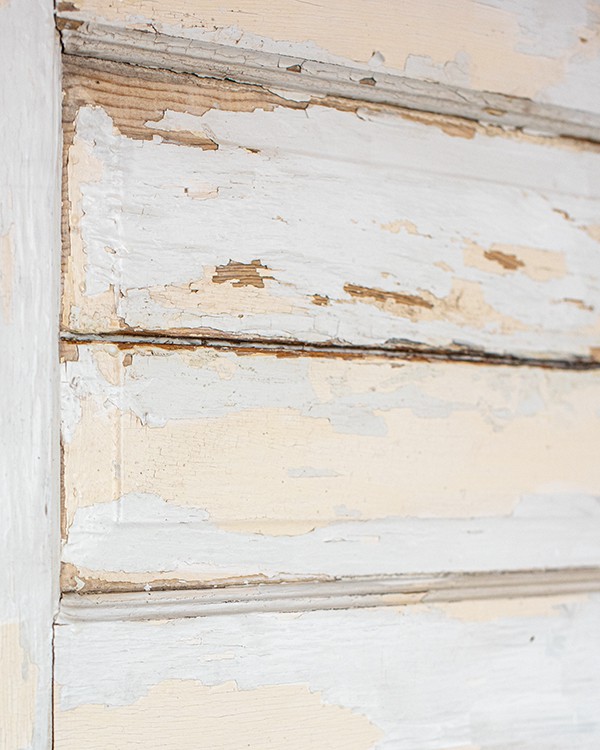
This antique door was a fun project for a client! She wanted to preserve the chippy paint style without more chips of paint all over her floor. We sprayed Minwax Polycrylic (to stiffen and stick the peeling paint) and then used a brush gently to apply more layers of Fusion Mineral Tough Coat (which won’t ever yellow or amber).
Best Practices for Applying Polyurethane
Several products will do the job flawlessly if you follow the instructions. There are a few best practices to help you nail the process.
- Completely stir the poly before use and occasionally during application to keep the ingredients in suspension. Be careful not to incorporate bubbles while stirring.
- Use a high quality paint brush or paint sprayer.
- Brush or wipe quickly in the same direction one end to the other. Do Not back-brush if the product is drying.
- It is generally not necessary to sand between coats, unless you have imperfections which can be sanded out.
- As with any paint project, do not use in high (>80%) or very low humidity.
- Avoid direct sunlight when applying.
- Allow the piece to fully cure before setting items on it such as heavy lamps or other painted materials.
Want to Learn more about Painting Furniture? Check out these Guides:
- Best Navy Cabinet Colors
- The Best Paints for Cabinets and Furniture
- Removing Wood Grain for Painted Furniture
- Cerusing Technique on a Dining Room Table
- The best Paint for High Traffic Furniture and No top coat
- How to Paint a Bathroom Vanity
- 9 Amazing Furniture Projects for your Inspiration
FAQs
Polyurethane cannot bond properly to a piece of furniture that has had wax applied to it. The wax must be stripped entirely, usually with chemical strippers.
General Finish’s High-Performance Top Coat in Flat Finish is the best chalk paint topcoat because it preserves the look, feel and color of milk paint and chalk paint while increasing the durability dramatically.
A quick way to tell if your polyurethane is truely water resistant is to leave out a glass of ice water on a test surface for a few hours to overnight. If a water ring shows up, the surface isn’t entirely sealed.
When chalk paint isn’t protected with a top coat, it is prone to easily scratching and stains from spills. It also is harder to clean.
Have fun with your project! Feel free to ask any questions or give your experience with these products in the comments below.
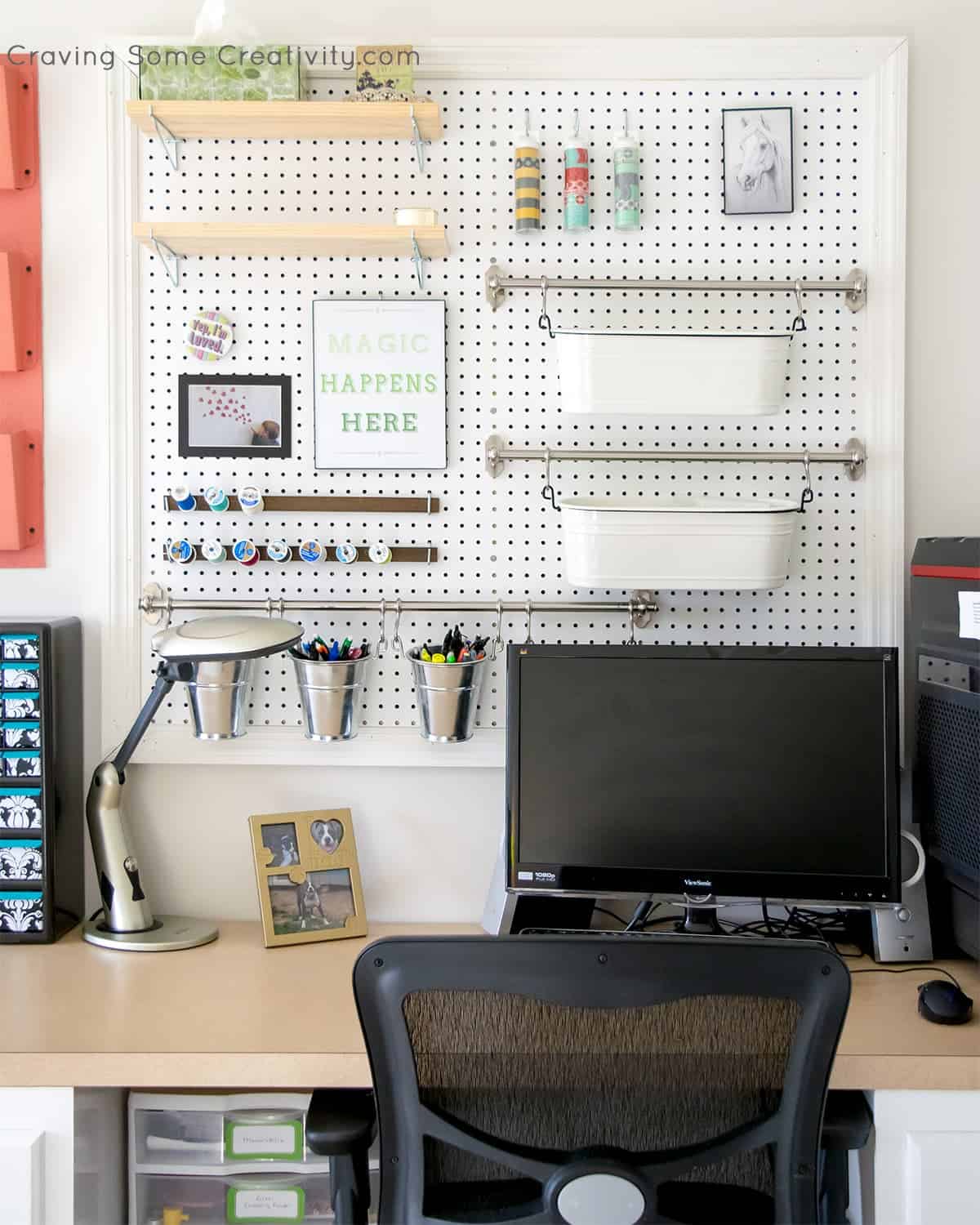
Grab our free series "Weekend Home Projects that will Transform Your Life" Sign up below to receive updates including free printables, organization tips, home improvement projects, recipes and more! |
More Furniture Painting Techniques
PS I love seeing your creations! Be sure to take a photo and tag #cravingcreative on Instagram! You can also stay in touch with me through following me on Instagram, Pinterest, and subscribing to the newsletter!


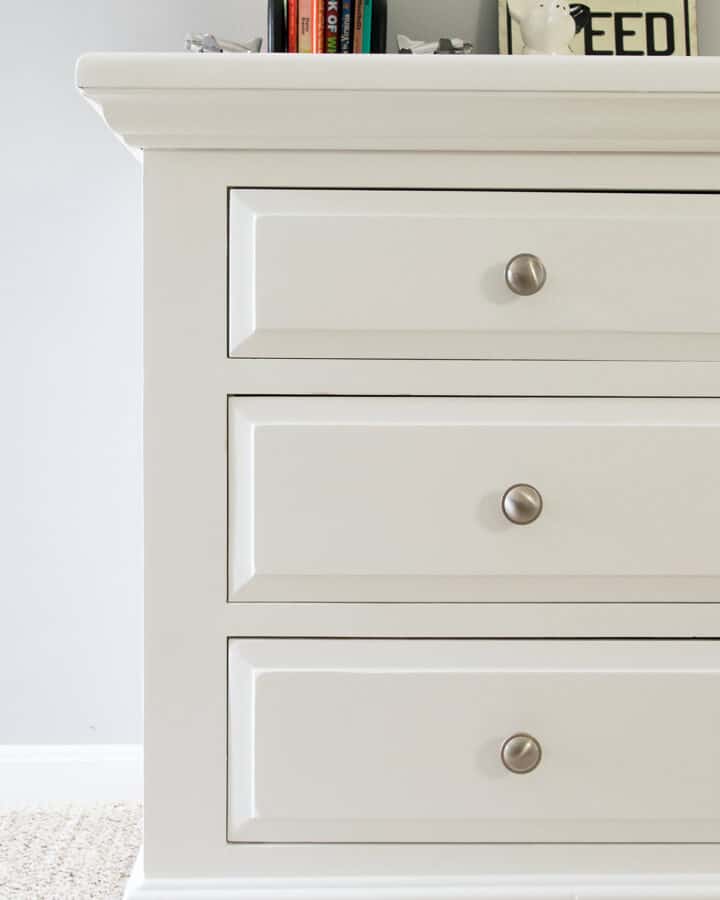
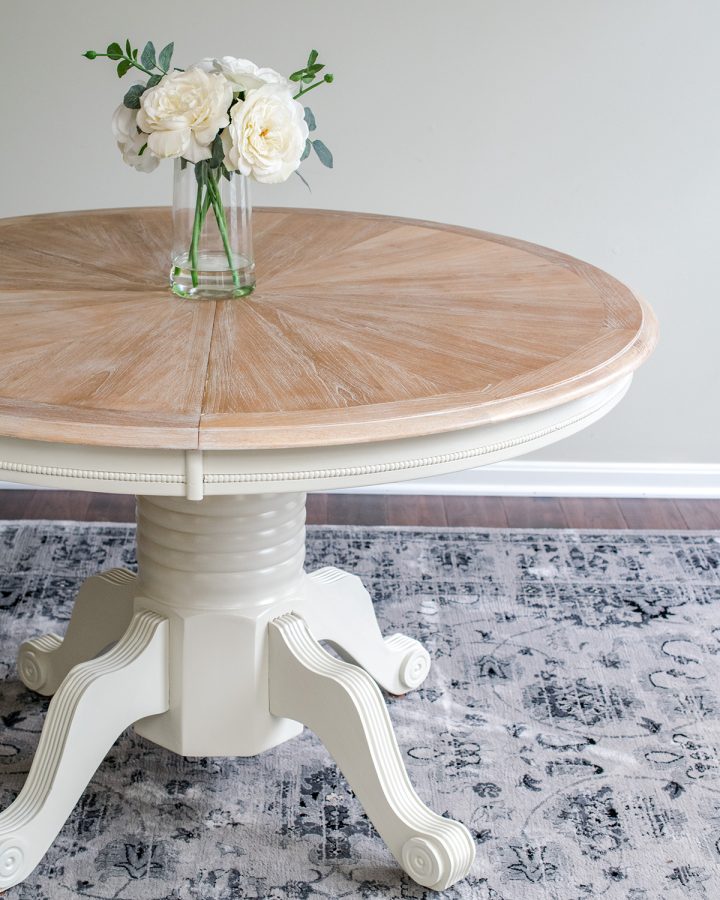
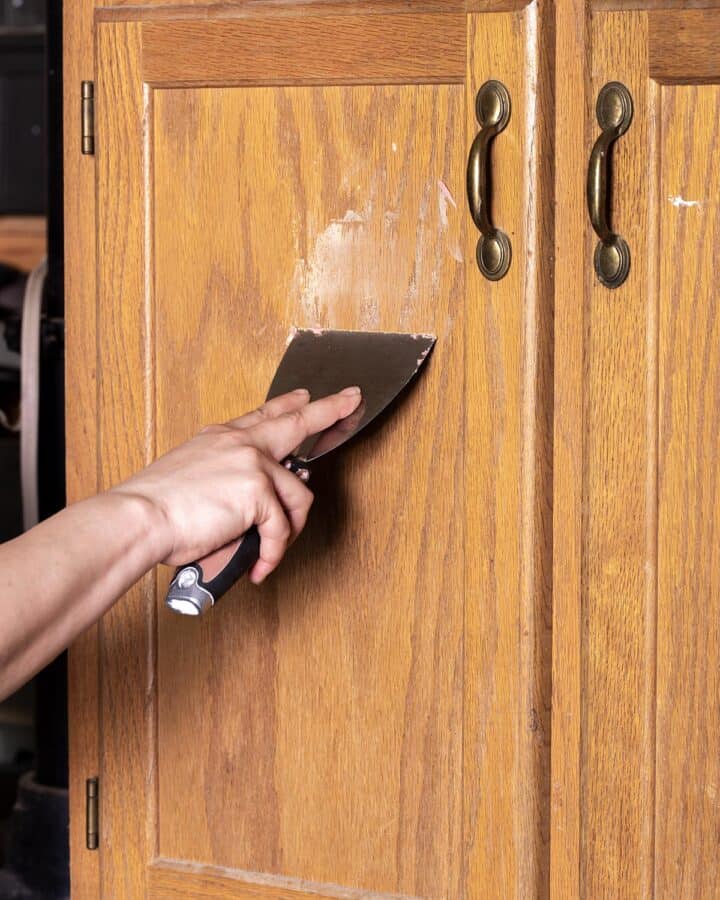
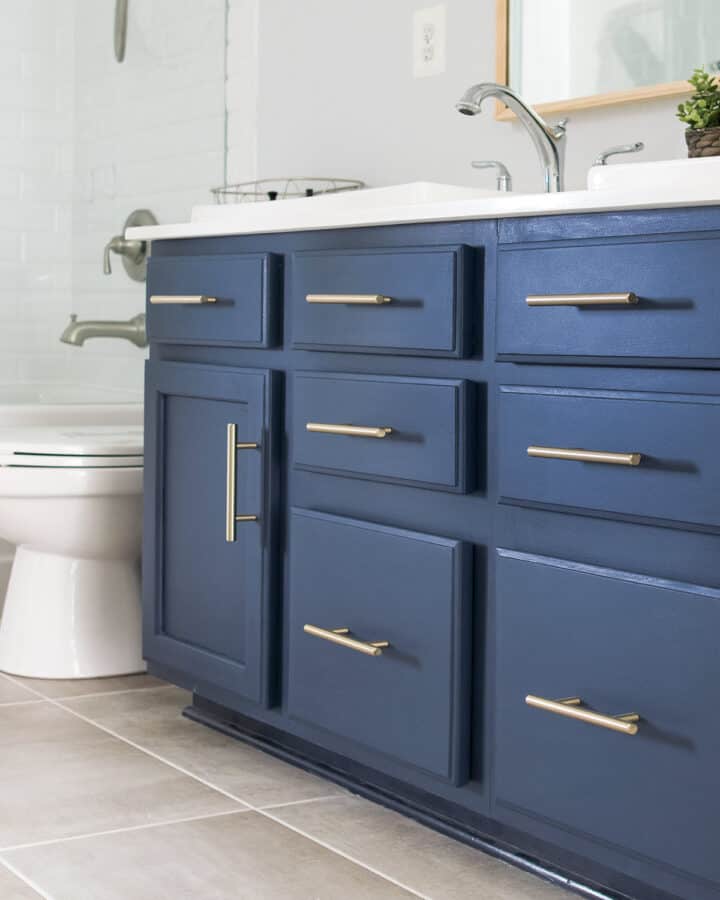
Suzette says
Hi Rachel! Thank you for this informative article!
I could really use your advice regarding a topcoat. I’m an experienced DIY’er but my current project is large and a bit different. I’m transforming a Baby Grand Piano from an acoustic piano into a digital piano and then painting an Under-the -Sea theme on it to go with my Tropical themed home. The paints I have used are latex paint and acrylic outdoor and enamel art paints and a little glitter. I would like to protect my artwork once I’m finished but don’t want any finish to change the colors. I’m looking for a satin or semi-gloss finish; I haven’t quite decided, but am leaning toward a semi-gloss. It also needs to be able to go over a metallic spray paint I used on the soundboard to mimic the harp section that was removed.
I would like it to be very durable as well.
In the past I have used spray and brush on acrylic clear coats. I don’t mind applying it either way, but have found that with acrylic brush -on clear coats it is difficult to eliminate brush strokes. I’ve wondered if its possible to use a product such as Floetrol with a clear coat or if it would ruin the sheen or make it cloudy or less durable.
I also had thought about possibly using an epoxy/ resin finish but have never worked with it before and am a bit intimidated by it, especially as I would be applying it on vertical surfaces such as the sidewalls of the piano.
Any suggestions from you would be greatly appreciated.
Rachel says
What a wonderful project!!! It sounds beautiful. To start, gloss will often deepen colors, i.e. make them appear more saturated, possibly darken slightly. Since you want to try to not change the colors, I would go with a satin over a semi-gloss.
Floetrol is not recommended with topcoats, and I try to not use it since paint options have come a long way in recent years. Floetrol works well for eliminating brush strokes, but it can mess with the durability and longevity of paint. All of the products I have used would work with a variety of paints, even metallic and glitter. What I would be most concerned about with your situation would be finding a product that won’t amber over time because of the handpainted look you have.
I have used epoxy in other applications including a pour-over type, and it is durable. Honestly, finding the right epoxy finish and the setup/mixing is the hardest part. However, I can’t be completely sure of how it will react with the different paints you have used. Epoxy/resin is a viable option with more research.
Thomas says
Hello,
I am refinishing a dresser for my daughter’s nursery in General Finishes Milk Paint. We are deciding between a very pale pink or antique white. We are not distressing it and it will be smooth. I would like a satin/eggshell finish. My concern is I do not want yellowing and want something easy to apply. In the past I have gel stained and then used minwax wipe on Poly but I don’t think that would work here. Do you think the varthane is a good options any other products that are easy to work with and worn yellow.
Rachel says
General Finishes makes many excellent protective topcoats. As a general rule, I do like to recommend using something from the same company because it is going to be the most thoroughly tested combination and it won’t fail or the manufacturer will warn you that it would.
laura s says
Hi, i am painting a buffet black but i am staining the top a dark wood color. Can you tell me if i should paint the bottom first and then stain the top or the other way around? Also when i am done with it all, Do i put the water based polyurethane all over the whole piece? (painted and stained part)? For a first timer like me, do you think it would be easier for me to spray or paint the polyurethane? thanks for any help you can give me
Rachel says
It doesn’t actually matter which you do first. If you are using an oil-based stain, however, I would use a true polyurethane rather than a water based one.
April Tuininga says
Hi! I’ve just painted a bare wood book shelf/bench with two coats of dark blue fusion paint. I’d like it to have a poly top coat and plan to use a polyurethane. Do I have to wait for the fusion paint to cure first (21 days) or can I top coat it after a day or two of drying? Thanks!
Rachel says
A few days should be fine. Although it’s not as necessary with Fusion because it is zero VOC, I usually give paint at least a few days or a week to outgas and harden.
Carol Schmidt says
Hi Rachel. I chalk painted my parent’s 1970’s bedroom set. I am having a hard time deciding between a flat or satin poly finish. The furniture base is done in a Dove Grey (almost white) and the tops are stained walnut. Does Flat out Flat have any sheen at all? Is it as flat as chalk paint? What advice can you give me that may help me to decide? Thank you.
Rachel says
If you like the sheen of chalk paint, I would definitely stick with a flat topcoat. Satin does have a bit of shine to it and there is a photo in the post of the change in sheen when a satin is applied over a flat chalk paint. Even wax has a bit of a sheen to it and gives depth to the whites and colors of paint. Flat out flat is the flatest of any poly I have used, and Varathane’s matte finish would be second.
Minda Lambert says
Hi Rachael, I am also new to painting furniture. I just painted an old school desk with Valspar cabinet and furniture oil enriched enamel. I was told at the store it would be the most durable. The color is a light violet. I intend to decorate the top with a few inspirational stickers ( on the edges, not over the writing surface.) I’m struggling with what if anything to seal the top and over the stickers with. In your information you said not to use these top coats over anything with oil. I also want to avoid yellowing. I would really appreciate your guidance before I go forward. Thank you
Rachel says
While this product has been around for a few years, it is the only paint (that I know of) that is formulated in such a way. I have only had the occasion to use it once, on some trim work. Even store associates don’t seem to really understand how it’s made other than it behaves like an oil and cleans up like a water, acrylic, or resin based paint. It is very durable and smooths well, which I am sure you are aware of. As for a topcoat, you could probably get away without one, but I do understand the sticker problem. As long as you let the paint fully cure before topcoating it, you should be fine with using a water or acrylic based polyurethane. I would ask your store’s best paint person for recommendations or customer service at Valspar.com as I am sure you don’t want to spend money for an entire gallon just to seal one desk top. A pour-over style poly may also be fun as it will put a super thick coating so the edges of the stickers are seamless. That’s not a recommendation necessarily, just an idea.
Zoe Blalock says
Hi Rachel – I am painting a credenza and I used high-gloss paint not realizing that it would emphasize all the dings and dents in the wood. If I use a flat topcoat will that help mattify the surface or will it look funny with the shiny paint? I know I’m a little late in the comments but if you see this any advice would be much appreciated, thank you for putting out all this information!!
Rachel says
Not knowing exactly brand and that it’s high gloss, I can only say what I would do in this situation. If it’s all finished, I would just lightly sand the top paint coat – maybe like 220 grit, and paint a last coat over it in the same color but a different sheen. I would be very concerned that it would streaky if I only added a top coat.
Janet Taliaferro says
Hi Rachel,
I just finished painting a small cabinet with Behr Chalk Paint (first-time chalk paint user) and then applied a thin coat of Minwax Water Based Polycrylic in Satin. The issue is that I’m not fond of the color and want to repaint it a bit darker, but don’t know what I should do before repainting it…sand, prime, etc? I would appreciate your advice on the best way to do this.
And…thank you for your article. Great information!!
Janet — still learning new things at 67 y/o. 🙂
Rachel says
Mistakes are the best teachers. 🙂 As long as there isn’t a lot of old layers of paint and all the paint is well bonded, you only need to sand before repainting with 120 grit. You don’t need to remove all the previous paint, just sand enough to rough up the surface enough to allow the new paint to stick well. Priming should not be necessary in your case.
Melinda Field says
Hi Rachel
I lived Reading about your makeovers! I’m so inspired!
I have A question about what kind of top coat protective you would recommend on a coffee table that was white washed with a chalk like paint?
I purchased This table that someone else refinished and want to make sure to add a protective topcoat so we don’t get wet rings or other damages. I want To the look to stay as consistent as possible. Flat with no sheen. I’m almost looking for like a dry flat top coat. What do you think is a good product for that?
Rachel says
Any of the above top coats will work with chalk paint, but I would generally go with something like General finishes or Minwax since you probably like the very flat sheen that chalk paint has. General finishes makes a Flat out Flat poly that is durable and very flat. Minwax also makes a spray that isn’t too bad, but I would recommend several thin coats to make sure you get full coverage.
Karen Butler says
Great information! I have a kitchen cart from the 1950s that I have refurbished and I’m wondering what kind of pol y top coat I should use on it. The surface is currently painted with a semi-gloss enamel but I feel like it should be protected because of the use in the kitchen.
Rachel says
I am going to assume that the cart isn’t an actual food surface, because that can get really tricky with which products to use. Any of the products above will protect the surface from staining and making them easier to wipe clean without damaging the paint, so it would be completely up to you based on your desired sheen, durability, and how you will use the cart.
Heather says
Hello! So I am in the process of painting my cabinets using Annie Sloan Chalk Paint in Old White. This is my first time and I’ve already had a few hiccups. 🙁 I like the foam roller better than the brush since it doesn’t show brush strokes, the wax I hate! On the few doors and sides of cabinets I did already they look cheap and blotchy and I’m so upset. I’ve been spending a lot of time and effort and for the end result to look like that I was bummed. But I am determined to have nice refreshed cabinets when I’m done. I repainted the waxed cabinets and now want to be sure I choose the right poly. I’ve been reading a lot about Minwax Polycrylic Satin for Cabinets and I’m thinking of using that but want to be sure. I don’t have a sprayer so what would you recommend using to minimize brush strokes? Do you think this will turn them yellow? And about how many coats? I don’t want them to be shiny just a nice protective layer.
Rachel says
If you really don’t want brush strokes, I would go with the lowest sheen in a poly. A satin is going to be more likely to show brush strokes, but can be less with the right technique. I have used Minwax a few times, for budget reasons, although I have some other more expensive products that I generally prefer to work with. You can use a microfiber roller to minimize brush strokes although you would need to still brush in the corners. Many people I know have used Minwax poly over Annie Sloan without a problem of yellowing, although I have not personally. I normally spray 2-3 coats, but it’s a little different with a roller. Some only use 1 coat, some use 2-3 coats with sanding before the final coat for smoothness. Good luck with your project!
Kelly says
I’m over-coating Behr chalk pain (tinted navy) with minwax water based poly. The saleslady said to wait 30 days for the paint to cure (although she admitted to waiting only 7 on her own project) before top-coating but I can’t find any guidance from Behr. Any advice? We stripped and sanded a desk, poly’d it all distressed, and just painted the drawers 2 coats chalk paint.
Rachel says
I have never waited the full cure time on paint. I do usually wait at least 3-7 days to outgas if necessary. I haven’t used Behr’s chalk paint particularly, but chalk paint naturally dries/cures faster than other paints. Looking at Behr’s website, you are right – there isn’t much guidance. However, on their decorative chalk wax, they say to wait 2 hours before applying the wax, so I think you will be fine with waiting a few days or only a week to apply poly.
Becky says
Rachel, the work you have done and posted is beautiful! I’m new to this furniture restoration process. I tested a piece of wood by painting it and applying a satin water based polyurethane. It came out a little shinier than I’d like so I need to keep experimenting. However, seeing the final sheen made me wonder, how is putting a top coat different than painting with a paint that has a sheen to it? How is applying a top coat different than painting the furniture with satin or semigloss paint? Is one more durable than the other?
Rachel says
Hi Becky! Great questions! There are some paints you can use that don’t have a strong necessity for a topcoat, unless you are using them on high traffic furniture (dining room table top, kitchen cabinets, etc). In this post, I talk about my favorite paints for furniture. I use a few different ones for different situations. A polycrylic topcoat is more durable than paint alone, even paint with a sheen. I often describe it as similar to coating a piece of furniture in a thin layer of hard plastic. Furthermore, a topcoat is scrubbable generally without damaging the paint itself. Have you ever used a magic eraser to scrub off walls and then noticed a change in the color left behind? A good quality poly won’t do that. While you could change the sheen of a high-gloss poly, it would still be less noticeable than scrubbing a high gloss paint. They also make matte polycrylic, if you don’t like the sheen. A matte paint will always be the most likely to scuff or mar. Lastly, a polycrylic is not porous at all. It’s not very common, but some paints like chalk paints can soak up oils or stains and change color over time. I hope that answers your questions and welcome to a rewarding new adventure!
Amy Kostandaras says
Your article is very informative I have used
Polyacrylic on chalk paint and now I have painted a rocking chair in Fusion paint and
Want a higher sheen that the tough coat from fusion.
Can I use Polyacrylic as my top coat over the fusion paint. I have the wipe on that does not yellow. The chair is in a light blueish green.
What do you recommend
Rachel says
Thank you so much! You can definitely use any topcoat you like over the Fusion paint. I’ve sprayed satin polyacrylics over Fusion and never had any issue. For many applications, Fusion doesn’t totally need a topcoat, but for a regularly used chair, I would probably top coat it too.
kate says
Thank you for this article! I’m thrilled with the way my desk came out, except for the top. I blue-taped the edges then poly’d the top for extra protection. When I removed the tape, the poly peeled off with it!! I sanded it all down and redid it without tape, but I’m worried that the poly isn’t really bonding to the paint. Maybe I should do it again, and do the poly while the paint is still tacky? Any other ideas/suggestions?
Thank you!!!!
Kate
Rachel says
Oh no, I am sorry you had to do all that work over again! What probably happened was that the poly was too dry. If you think about it, paint, poly, and other coatings dry from the outside-in. Often what we feel as “dry” isn’t really dry underneath the top layer exposed to air. So the tape pulled the poly off because the hardened outside grabbed onto the tape. I generally pull tape off as soon as I am done- i.e. when the poly or paint is still wet. That helps prevents chipping or flaking. It takes a long time for poly to fully cure, anywhere from a few days to 2 months depending on product, thickness applied, and the humidity where you live. While it is possible that a product failure is happening (I am not sure what brand of paint was used), it is pretty unlikely that the poly isn’t sticking to the paint. It just needs to harden. I hope that makes you feel better and glad to hear that your project turned out great!